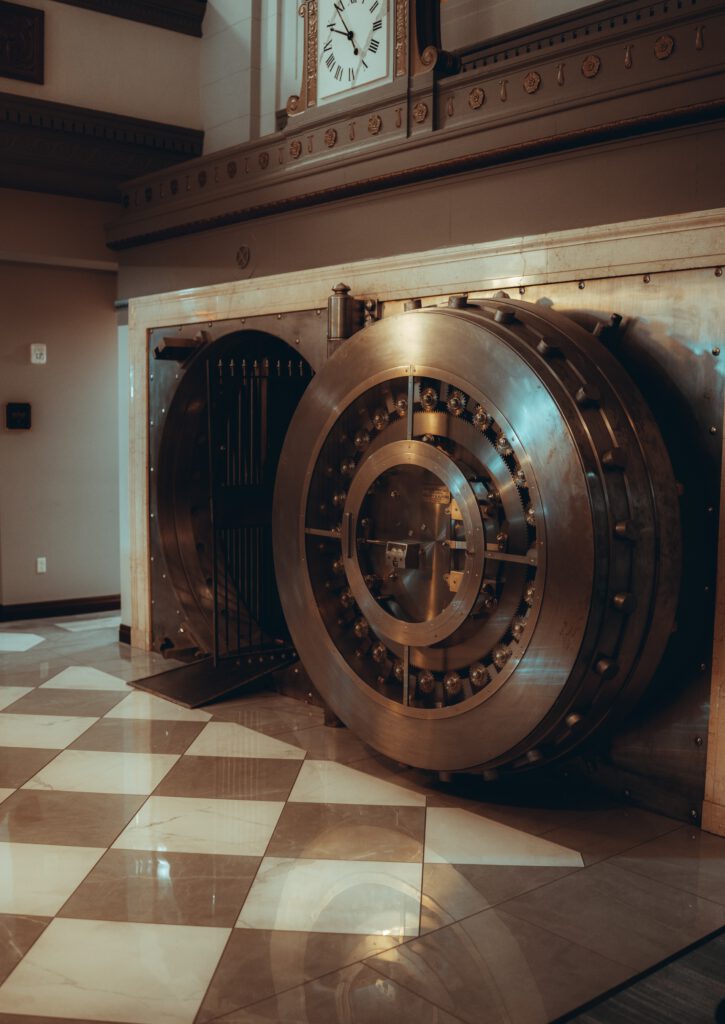TL;DR – amsterdreams uses a financial model to buy homes, where many people from all over the internet pool their money together. The blockchain records who put in how many and so gains can be distributed. This is different from centralized finance (CeFi), where a central bank decides how to allocate home loans, from the money their customers put into their saving accounts.
When starting this article, I had expected that there would be more good material on the web or on YouTube to explain decentralized finance (DeFi). However, what I found was that almost all content focuses on loaning out one cryptocurrency to get another. This is a way to get a return on your investment – basically, you collect interest from people who loan money from you – but it’s not what amsterdreams is about.
Ok, so here goes. Let me take you through how amsterdreams looks at financing homes in Amsterdam. First, let me make the distinction with centralized, or classic, finance.
Centralized finance: the old-fashioned way
In centralized finance, a central entity governs how the money is distributed. Usually this is a government or a bank. Customers store their money with the bank, in their checking or savings accounts. Contrary to what children’s comic books about the Wild West taught you, they don’t put that away in a big safe. Instead, they give it to other people and charge them interest for it. Or invest it in business or the stock market and get a return. You get the picture.

In principle, there is nothing wrong with this model. The financing options offered by banks have enabled millions of business to start and expand and billions of people to own a home, a car or simply pay for that plane ticket on their credit card next month or the month after that.
It gets a little ugly in two ways, though. First of all, the bank decides who gets the money. If they (rightly or wrongly) feel that you pose a risk to their returns, then they’re just going to say no. This happens to entrepreneurs or young people a lot when they apply for a mortgage. No steady paycheck or years of continued returns? Well, come back when you have some.
The other problem is the returns themselves, which are…well, let’s say not equally distributed between the bank and the customers – whose money it actually is!
If we would have walked up to a bank with the business idea for amsterdreams, they would have laughed at us. “Hello, we are a startup and we want some money to buy not one but maybe a hundred homes in Amsterdam.” Good luck with that.
Why amsterdreams chose to decentralize
In all honesty, the bank has a point in that last case. Since the amount of money the bank would put into amsterdreams would far exceed our own bank balances, the bank bears all the risk alone. Worse, the bank would charge a hefty interest rate to cover that risk, that amsterdreams would have to somehow recover from our customers. Getting a home through amsterdreams would have become more expensive and difficult than directly with a bank. The idea would be dead in the water.
In centralized finance, one party provides all the money, takes all the risk and gets all the returns. This party is usually a bank and they decide who gets the money.
We realized that there is money out there. Many of us have some savings, some money that we set aside for the proverbial rainy day. Money that we don’t need today to survive or buy something.
For me personally, it’s not been that easy to decide what to do with it. A savings account is safe, but with inflation higher than interest, actually your money decreases. Investing in stocks or cryptocurrency can be interesting, but these investments are relatively volatile. You have to be on top of it (and know what you’re doing!) to prevent losing a large part of your investment when the whole thing tanks at 9:53 on a Tuesday morning. Banks provide mutual funds to smooth that out, but the returns are consequently lower as well. And everything is padded with fees and delays of several days to buy or sell anything. Aargh!
So we came up with a way to put these savings into Amsterdam real estate, a solid investment (no pun intended) with historically strong and consistent returns. amsterdreams was born.
amsterdreams DeFi
The money for the amsterdreams homes does not come from one central bank, but from many, many amsterdreams investors.

In this article, three investors put enough money together to buy an amsterdreams home. That’s not what we expect to happen though: more likely, hundreds and thousands of people will put a small amount in.
These little pieces of savings – you could put in $1 if you wanted – add up to big amounts. House buying big, let’s say.
Perhaps this sounds a little like crowdfunding to you, like what kickstarter.com does. The big difference with amsterdreams is that the funders in the crowd don’t buy a physical product, but a token that represents their investment. You can’t sell back your novel Kickstarter Bluetooth-enabled neck massager, but you can sell your AMS token and have money again. In case the rainy day arrives.
Encore
In researching this article, I watched countless YouTube videos about DeFi. Most of them are hard to keep up with without a degree in computer science. With respect, they can be nerdy 🤓
This one, by a channel called Defi Donut, was quite well made and funny, in my opinion. Have fun!
A word to the wise
We put this bit of text at the bottom of every article on investing. Not in fine print and not because we have to. We want the best for you and don’t want to get you in trouble because you bought into something we said.
Investment comes with risk. Past returns do not guarantee future successes. amsterdreams provides you to the best of our ability with information to judge the risk and compare it to other ways of saving or investing, but we are human and we can also be wrong. Things could happen that we did not foresee.
You could lose part or all of your investment. So don’t invest money that you cannot afford to lose.



